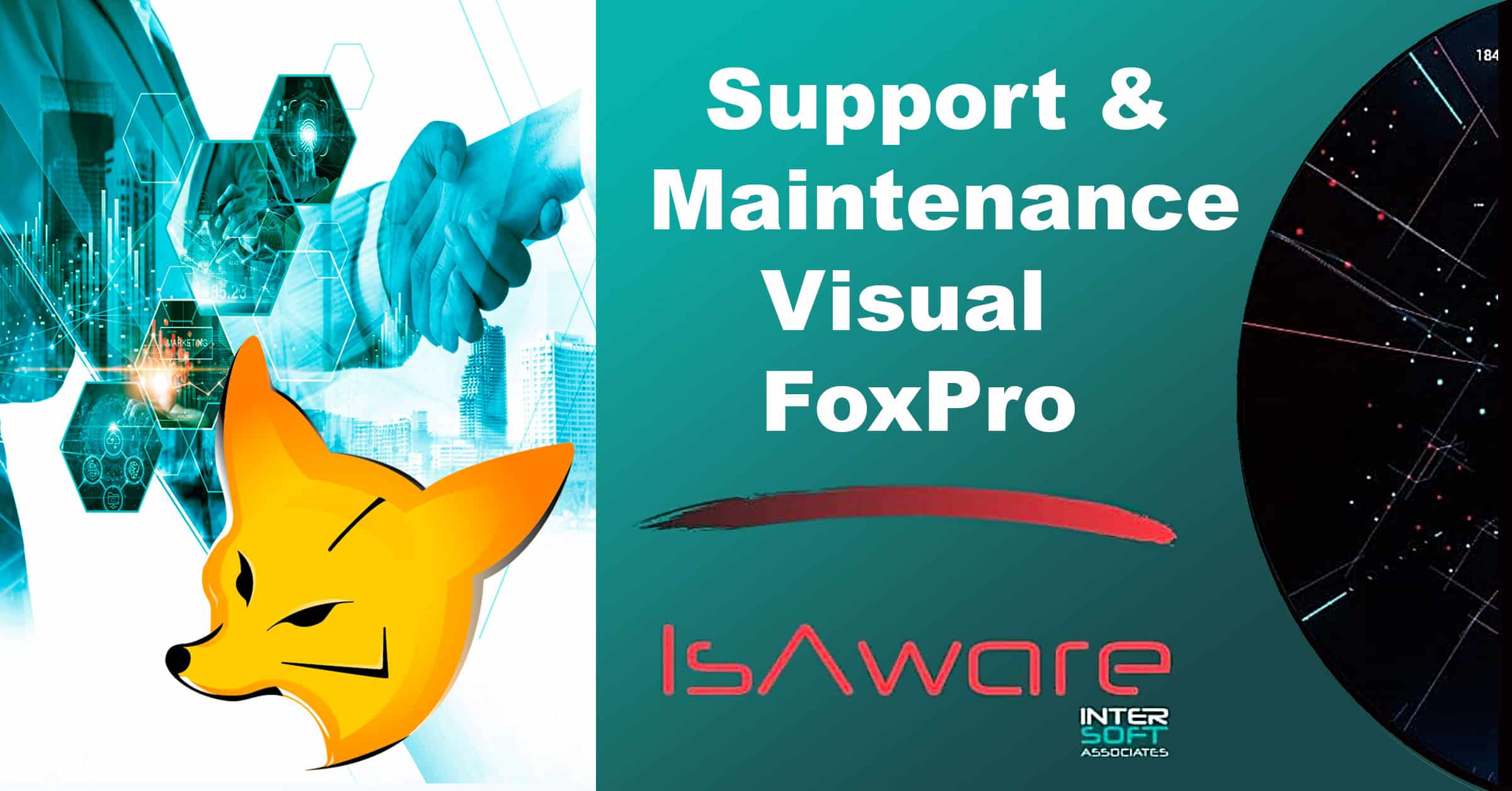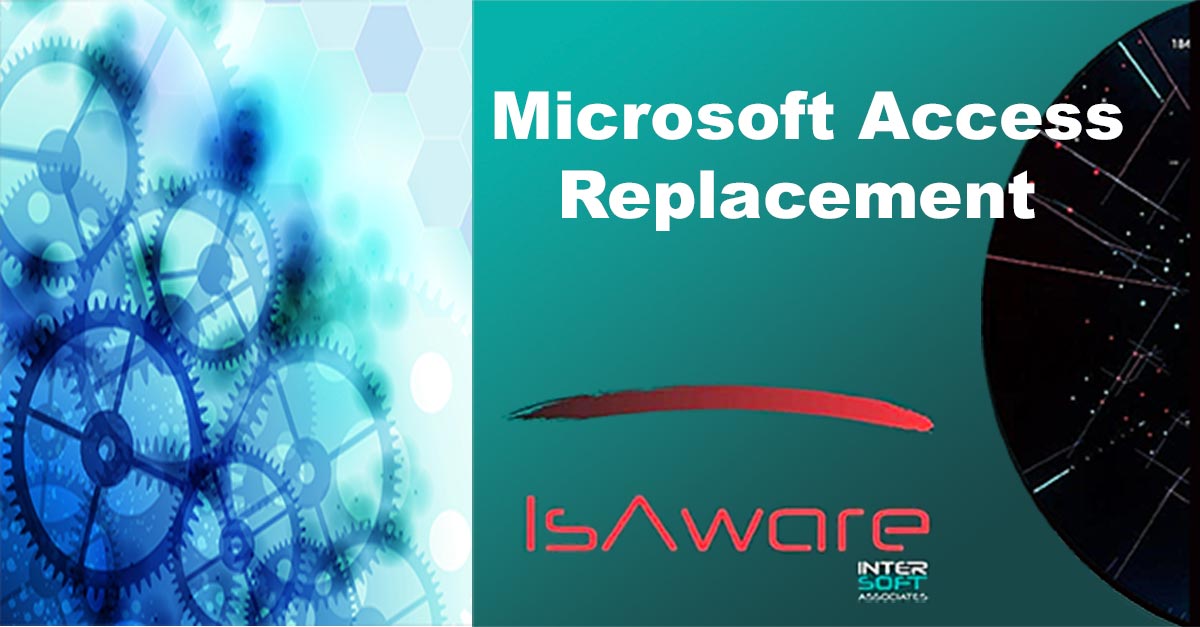Migrations
Cloud Migrations, Database Migrations, Web Application Migrations & More

Make Your Move
Migrating databases and systems when they reach end of life doesn’t have to be daunting, intimidating or expensive. The alternative of continuing to use deprecated, legacy systems can prove far more costly.
New technologies create new opportunities and new possibilities. With innovation come new ways of doing things, increased efficiencies, new integrations or better and faster ways of solving both routing and complex problems. If the systems that help drive your business are built on outdated technologies, none of that potential is available to you.
Organizations can lose sight of the fact that somebody has to maintain those legacy systems. In the case of older systems like FoxPro, it is getting harder and harder to find capable people that understand the technology and what it can do, since few people are actually learning the system today. This makes it expensive and often time-consuming to keep an outdated system going, so organizations make concessions and devise workarounds rather than using the full capabilities of today’s modern technologies. At InterSoft Associates, we want to help you do better.
Keys to Making a Migration
- Talk to an expert who can understand why a legacy system is still in place and how a modern approach can significantly improve on that solution.
- Understand the cost benefit. A new or upgraded system should start by leveraging what is already there. You may not need to throw out what is working, even if you need it updated or upgraded into new ways of accomplishing existing tasks.
- Know the risks. When you are updating or rewriting software written on a legacy platform like FoxPro to new or improved technologies such as .NET, the old or existing platform will be eliminated for a newer, more reliable, more secure and more capable platform. Make sure you’re prepared.
Migrating from legacy systems does not have to be painful, unnecessarily expensive or even a significant interruption to existing workflows. At InterSoft Associates, we can evaluate what you are doing now, what needs to be done for upgrades or updates and help conduct a migration that ultimately helps your business run.
If you’re still running mission-critical systems on outdated code or databases, let us show you how making upgrades can be easier and more cost-effective than you might think.
Defining Scope When Migrating Data To The Cloud
A key advantage of migrating data to the cloud is access – data is available anytime, anywhere, and to the appropriate people or integrated technologies that serve you best. Read on as we explore three crucial aspects before you start migration: Understanding scope, confidence in key stakeholders and partners, and continuity – keeping data processes going even in the midst of migration.
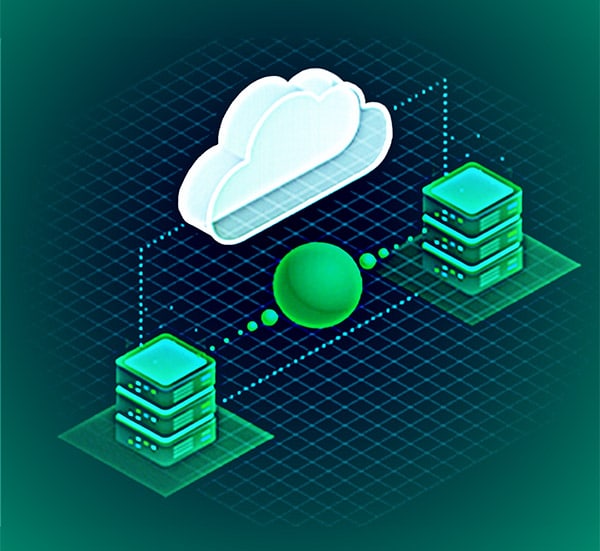
Defining Scope When Migrating Data To The Cloud
The most important consideration when migrating data is not technical, it is strategic. Proper planning of your migration will optimize an environment for success with your migration and minimize surprises and potential snags. What are your goals with migration? What benchmarks or milestones will help you realize that these goals are being met? How long will the migration take? Defining scope for your migration helps answer these and other questions:
- Who will be doing what, and when will you be doing it?
- How long is it anticipated that each of the component tasks in the project will take to complete, and how long will the entire project take to complete?
- What is the budget?
A consultative approach to help you define scope will go a long way to creating a smooth and seamless migration. In a cloud migration you are moving from one environment to another, so it is important to understand the different environments and what is available and possible. There are different cloud environments, and some may be better than others for what you are trying to accomplish. There may be multiple decisions and technologies that could suit your needs, and you may have various options to choose from. Among those options are going to be considerations for security, redundancy, backup scenarios, and disaster recovery.
As a business leader you are not and should not be required to understand the technologies involved in a data migration. You do, however, need to understand and appreciate the importance of the project. Having the right partner to deliver guidance is a highly strategic imperative to a successful cloud migration. It is crucial that you have confidence in your key stakeholders for the project.
Confidence in Key Stakeholders for Cloud Migration
Business leadership should be involved in planning for data migration. It is not usual for management to offload data migration projects to IT staff, but your data touches all parts of your organization. Executive leadership, as well as IT leadership, should be involved in high level planning and coordination.
Again, as timelines and budgets are part of the scope discussion, involvement from leadership is essential. But there is more to consider, requiring leadership’s perspective and support.
- What insight might be required from both key and rank-and-file employees as part of the migration strategy?
- How is the data you are migrating currently being used, and what is the future potential that data can serve the business?
- What are contingency plans if key personnel with intimate knowledge of the data or systems leave the company? This is a really essential task for any organization.
Who should be responsible for data migration?
As you build your roster of stakeholders, consider what needs to accomplished in a successful data migration:
- Auditing existing data and processes to validate them, ensure the accuracy and integrity of the data as well as the accuracy and integrity of processes, and resolve any issues or questions prior to migration.
- Make sure that you are utilizing the right tools and technologies for a smooth data migration, emphasizing security, speed, risk management and the data migration software’s ability to connect and support existing systems. It is also important to consider the opportunities to leverage the data and systems even further.
- Movement of data to the cloud (or to a new database, across networks, etc.). This might involve a Data Migration Specialist in your IT department or a trusted consultant like us at InterSoft Associates.
- Testing and continued auditing after data migration to make sure everything is working according to the plan that was developed in scope and strategy.
You can see how essential it is to have an experienced, expert partner as part of the data migration team. Simply assigning “the IT guy” to get it done over the weekend is not the path to sustainable, stable success in migrating data to the cloud. There are tremendous risks in data and data integrity if not done properly.
Continuity of Data During Migration

Big Bang Migration
In this approach to migration, all operations happen all at once. The old system is switched to a new one at a point in time.
Because changes happen at once, there is a single defined point of exchange. There is no need for parallel systems, which will avoid some cost, complexity and risk. Any disruption is minimal at most – usually with proper preparation and planning there is no disruption.
On the other hand, it is essential that the previous work described around scope and stakeholder responsibilities is thoroughly explored to avoid unexpected issues. If a Big Bang Migration fails it can require a complete roll-back to previous infrastructure and data , which can be expensive, time consuming and run the risk of disrupting the enterprise. If any data issues are not identified ahead of the migration, you may be in for unwelcome and expensive surprises after the migration event.
Trickle Migration
As you might imagine, in Trickle Migrations, the process happens more slowly and in phases. A parallel system is deployed so the old system and the new one run concurrently. This generally avoids any downtime or interruptions at all as data is continuously in movement.
As the migration happens over time, rather than all at once, implementation can be more complex, have more risk of disruption and can be extremely time consuming. As you are maintaining multiple environments, costs and effort will likely increase. However, problems can be identified and addressed in real time, and risks can be reduced. Especially for enterprise organizations, these reassurances can be well worth any increased costs.
It is essential that you end up with one version of the truth with no data corruption.
Data Migration, Drama Free
Remember that migrating data to the cloud does not necessarily mean changing what you are seeing or even how you are used to interfacing with your data. You are changing background architectures and technologies, but not necessarily the front-end that people are used to.
This is helpful to remember because sometimes organizations put off a cloud migration for fear that it will slow down existing processes or require new software or steep learning curves. Certainly new software may be part of the project – again, pointing to the necessity of a well designed scope and strategy – but strictly speaking data migration remains about data, not necessarily how it gets accessed.
Migrating your data to the cloud does not have to be difficult or painful, and it does not require your business to come to a halt while it gets sorted out. Seek out the guidance of experts to explore why migrating your data to the cloud might be a smart business decision and what might be involved in making it happen. Remember that here at InterSoft, that conversation is always free and easy.
Making Data Migration Successful: Overcoming Obstacles
Did you know that at least 83% of Data Migrations either fail, exceed their planned budget, or go beyond schedule?
Migration. It is a word that can send shivers down the spine of even the most experienced business owners. After all, Data Migration is no small thing; it can get complicated, time-consuming, and risky.
But moving your data to a new platform or software system does not have to be so complicated. By understanding the most common obstacles to successful Data Migration and proper planning, you can make the process as smooth, strategic and headache-free as possible.
Let us take a look at some of the common obstacles that come up during Data Migration projects and how to overcome them. Doing so will help you to form a better understanding of how to plan, start and execute a simple and successful Data Migration strategy.
What Is Data Migration and Why Is It Necessary?

Data Migration is the process of moving data from one database to another or from one system to a new platform or both. It is a necessary endeavor for a company that wants to upgrade its current capabilities in place or move to an entirely new system.
Database Migrations are most necessary when a firm updates its obsolete software. A Data Migration project may also include moving from an on-site structure to a cloud-based storage option to help with the optimization of their company. Both options are not mutually exclusive.
There are also specific programming languages and technologies used in software development that can influence the need for Migration, ASP and Visual Basic being two of them. They are two of the main languages supported by Visual Studio, a hub of programming tools used throughout the development stages.
Although support is still provided for ASP and Visual Basic, many organizations are transitioning to the new programming model, the .NET environment. Visual Basic is a classic interpreter-based type of language, while .NET is a compiled language. One of the many benefits of a compiled language is that the software will just operate faster with less waiting time for the user.
Another familiar use-case for Data Migration is the need to upgrade to new technologies. As companies grow and as technologies advance or as new platforms develop, Migrating data is increasingly just a part of modern business.
What Are the Data Migration Triggers?
To understand the common challenges that come with migrating data, it is important to first realize how Data Migrations get triggered in the first place. There are several different events and scenarios that can trigger a complete or partial move from one system to another, including:
- Mergers and acquisitions
- Legacy software modernization
- Data archiving
- Shifting to a centralized database
- Being introduced to an additional system
- The need to migrate to the cloud to expand your current storage capabilities more affordably
Understanding these triggers will help you develop better strategies for your own business. Each of these scenarios can lead to a need for a Data Migration initiative, and each presents its own unique set of challenges. For example, in the case of a merger or acquisition, you may need to combine two sets of data into one cohesive system.
Or if you are transitioning to the cloud, you may need to establish a set of proper and meaningful cloud KPIs, perform refactoring while mapping out what is currently available in your infrastructure so you can match those resources to your cloud provider.
Types of Data Migration
There are several different types of Data Migration that can be performed, each with its own set of challenges. The most common types of Data Migration are:
- Storage
- Database
- Application
- Cloud-based
- Business process
- Datacenter
There are also three types of Data Migration: cutover, staged, and parallel.
- Cutover Migration is the simplest type. All data will get moved to the new system at once. It can also be the riskiest, as there is no room for error.
- Staged Migration involves migrating data in manageable stages, which allows for a more controlled transition and makes it easier to troubleshoot any problems that may arise.
- Parallel Migration occurs when both the old and new systems are operating simultaneously. This option can be complex and time-consuming, but it does provide some benefits, such as allowing users to continue working while the Migration process is taking place and validating the Migration.
Potential Roadblocks During the Migration Process

Data Migration can also come with a few hurdles. But each hurdle is avoidable with proper planning.
Too Little Collaboration
Data Migration may take a large team or multiple people working on different things to successfully pull off the project.
Whether you have various internal employees or independent contractors, there is a chance that information and data will be crossed with others. This is especially true if you are using multiple tools and resources.
Alleviate potential misinformation, miscalculations, and reduced efficiency by collaborating with your team and all other departments that use or benefit from the data.
Use cross-functional tools to help everyone stay organized and together through different stages of the project, helping teams avoid confusion.
Size May Be a Hurdle
The first obstacle to a successful Data Migration is usually the sheer size of the data set. This can be especially daunting if you are migrating to a new platform or system that requires a different structure than your current one.
The best way to overcome this obstacle is by breaking your data set down into manageable and trackable components .This will make the Migration process less overwhelming and help you to stay on track.
Mismatched Data
Another common obstacle is often mismatched data formats between the old and new systems. This can cause problems during the Migration process, resulting in corrupted data or even lost information.
To avoid this, be sure to check the format of your data well in advance of the Migration process and confirm that it matches up with what the new system requires. A great way to do this is to create a data map between the old data structure and the new data structure. This process will help you create a proper roadmap.
Lack of Legacy Software Knowledge
If you are not familiar with the old system, it can be difficult to understand how your data is structured and where it needs to go.
This can lead to problems during the Migration process and a higher risk of data loss. To avoid this, take some time before beginning the Migration process to learn as much as possible about the old system. Contacting a professional like InterSoft Associates can help you through this process by, perhaps, reverse-engineering the old data.
This structured process will help you to map your data in an accurate way and ensure a successful Migration.
Miscalculation of Data Analysis
When processing large amounts of data, information can get categorized in different areas of a computer system, or more often, data is not categorized properly to begin with. This can result in inaccurate or incomplete data. If these issues go undiscovered it can lead to capturing outdated or incorrect information, potentially compromising the integrity of the entire dataset! This can also be the common problem of “two versions of the truth” where some values can exist in more than one field and they may not be the same. Work with an expert to help you resolve and scrub those duplicate values
Data analysis should be performed at the earliest possible point in the process. An analysis is usually conducted during the planning and strategy design phase and helps uncover any potential hidden errors with your data set.
Validation Inabilities
Even if you understand your source data, it will not always lead to durable specifications for migrating that data into a new target system. Early on in the Migration phase, any missed critical information could harm the operations of your project as it goes on. This is why continual validation and testing is necessary throughout the process.
Validating any transformation specifications at the start of the project with real data to support those specifications will help the process go more smoothly and easily. This is the better option in comparison to using possible or potential sets of data.
The Importance of Testing and Validating the Data Before It Is Moved

One of the most common obstacles to successful Data Migration is failing to test and validate the data before and as it gets moved. This omission can be a costly mistake due to potential issues such as invalid values, missing or incorrect fields, and formatting problems.
It may take more time initially, but validating your data before you move it will help ensure that you do not end up with corrupted, unusable or incorrect information in your new system once everything has been migrated.
One of the best ways to ensure easy Data Migration is by creating a data map and a test plan for each phase of the migration.
This is also known as a “data inventory.” This will outline every column and field in your current system, including the type of information it contains.
Data mapping in general is also a key component of data management.
Think about it this way: if your data is not mapped in the proper way, that same data can become corrupted, unusable and become a tremendous liability to the organization.
Make the Process Simpler
To ensure a user-friendly Data Migration process and project, working with a team of software developers and consultants can give you the most streamlined and reliable solution in the best time frame. Working with industry experts, like our team at InterSoft Associates, can alleviate the myriad of potential issues in data loss, invalid data, incorrect information or process confusion.
Although a Data Migration project can be simple to navigate with proper planning, it is often more helpful to have the process managed by a professional development team that focuses on a wide range of customized solutions. Whether augmenting your internal team or looking for an outside consultant, be sure to seek out a partner that understands the business strategy behind the Migration, as the experience to lead with confidence and is technically adept in managing a successful Data Migration.
Left Out in the Code: FoxPro and End of Life Migrations
FoxPro and Visual FoxPro were Microsoft database management systems that were discontinued in 2007, yet there are still many companies that are using mission-critical systems and software designed around FoxPro. Migrating databases and systems when they reach end of life can seem daunting, intimidating or expensive – but the alternative of continuing to use deprecated, legacy systems can prove far more costly. Read on as we explore the obstacles and opportunities of migrating from old, discontinued technologies to newer, more efficient, more capable and advanced solutions.
Understanding the Need for Migration
FoxPro and Visual FoxPro were, once upon a time, incredibly fast, capable systems using the dBase file structure that many organizations came to depend on for database management. Like any legacy system, one reason why it has continued to be in use today – all these years later – is simply because for those organizations it just works. With only a little scrutiny, however, that argument starts to falter.
Maintenance is increasingly difficult
Organizations lose sight of the fact that somebody has to maintain those legacy systems. In the case of older systems like FoxPro, it is getting harder and harder to find capable people that understand the technology and what it can do, since few people are actually learning the system nowadays. This makes it expensive and often time consuming to keep an outdated system going. More often than not organizations make concessions and devise workarounds rather than using the full capabilities of today’s modern technologies.
Innovation is impossible
New technologies create new opportunities and new possibilities. With innovation come new ways of doing things, increased efficiencies, new integrations or better and faster ways of solving both routing and complex problems. If the systems that help drive your business are built on outdated technologies, none of that potential is available to you.
Case in point: At InterSoft Associates we are working with someone who’s running important software on an old laptop that’s running Windows XP (which was released in 2001 and official support for it ended in 2014) and it is not even connected to the internet. But this laptop is running important mission-critical code. It is still involved in important organizational operations and calculations. There is a great deal of a risk and a huge layer of inefficiency to have something critical running on old software on an old machine that cannot even exploit the possibilities of on-line and real-time data and communications.
Security is a major concern
This illustrates the point that security becomes difficult to manage on legacy systems such as those written in FoxPro. As maintenance becomes difficult, it’s harder to keep the security relationship intact between the “old” system and newer, more security compliant software. As new security threats emerge, updates are unavailable to patch outdated systems.
Why Are Companies Still Using FoxPro and Legacy Software?
Even with the risks and obvious reasons to transition to a modern technology – like .NET – and upgrade, people continue to use old software because it works – or so they believe. It is serving some critical function that seemingly will not allow for the risk of interruption required to upgrade. This makes it easy to justify a delay or status quo, even for a system that reached end of life 15 years ago.
Yet, migration must be done to keep systems and software high performing – which, remember, are all in service to help a business and its people do their jobs better, more easily and more efficiently.
Keys to Making the Migration

- Talk to an expert who can understand why a legacy system, like FoxPro, is still in place – what problem it solves – and how a modern approach can significantly improve on that solution. Consider an expert with a robust development process so that you are assured of a smooth, transparent custom development process.
- Understand the cost benefit. A new or upgraded system should start by leveraging what is already there. In other words you do not need to throw out what is working, even if you need it updated or upgraded into new ways of accomplishing existing tasks. With that expert’s understanding of what is already available combined with the problems the old solution solves and what a new modern solution can improve upon, you can easily calculate the value and the benefits of migrating. Time and energy saved, efficiencies increased, opportunities uncovered and exploited even employee morale or communication improvements can all be a part of the solution, benefits and business case
- Know the risks. When you are updating or rewriting software written on a legacy platform like FoxPro to new or improved technologies such as .NET, the old or existing platform will be eliminated for a newer, more reliable, more secure and more capable platform. Again, do not let these things be a surprise – an expert should help you understand these realities long before new code-crunching begins. This is why understanding the business problem is critical, rather than having a myopic view of just what the old system functionally did with an eye towards replicating that. The custom software development expert should be able to say here is how we can take what you were doing and make it even better.
Migration is less about updating old code and more about upgrading the solutions to problems – which might mean rethinking the problem in the first place. Putting migration off because the old system “works” is usually a losing effort because at some point, like an old worn out car, it stops running, or you will not be able to buy the parts, or no mechanics will have the skills for repairs. The great news is that migrating from legacy systems does not have to be painful, unnecessarily expensive or even a significant interruption to existing workflows.
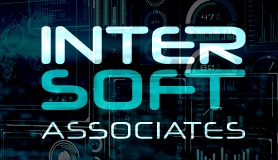
At InterSoft Associates, we can evaluate what you are doing now, what needs to be done for upgrades or updates, and help conduct a migration that ultimately helps your business run. If you’re still running mission-critical systems on outdated code or databases, let us show you how making upgrades can be easier and more cost effective than you might think.
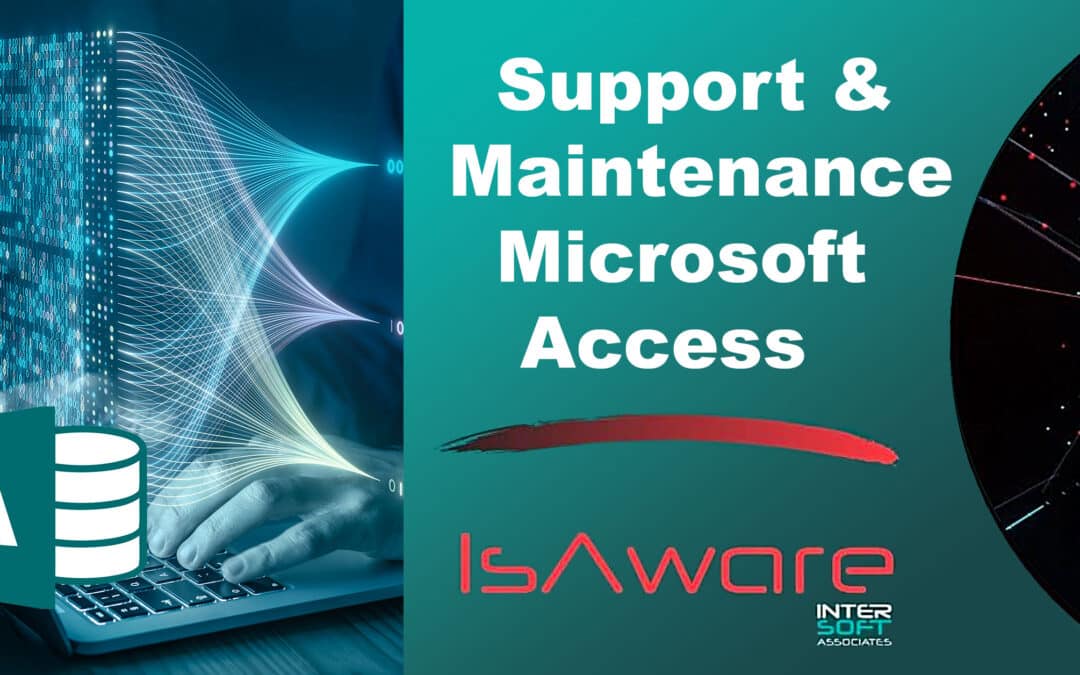
Expert Microsoft Access Support & Maintenance for Your Business
Empowering Organizations with Best Practices for Microsoft Access Support and Maintenance At InterSoft Associates, we...
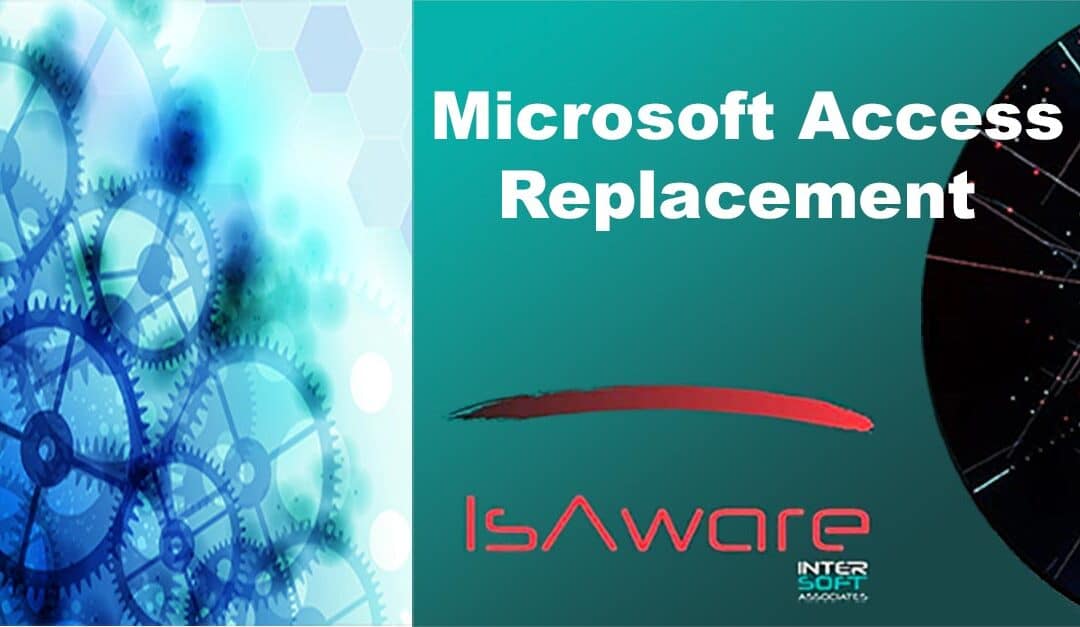
Replacing Microsoft Access with Modern, Scalable Solutions
Modernize Your Business Software with InterSoft Associates' Custom Solutions Outdated Technology: Introduced in 1992,...

The Risks of Using Microsoft Access
Microsoft Access debuted in 1992 as part of the Microsoft Office suite of office productivity software. It is a...




